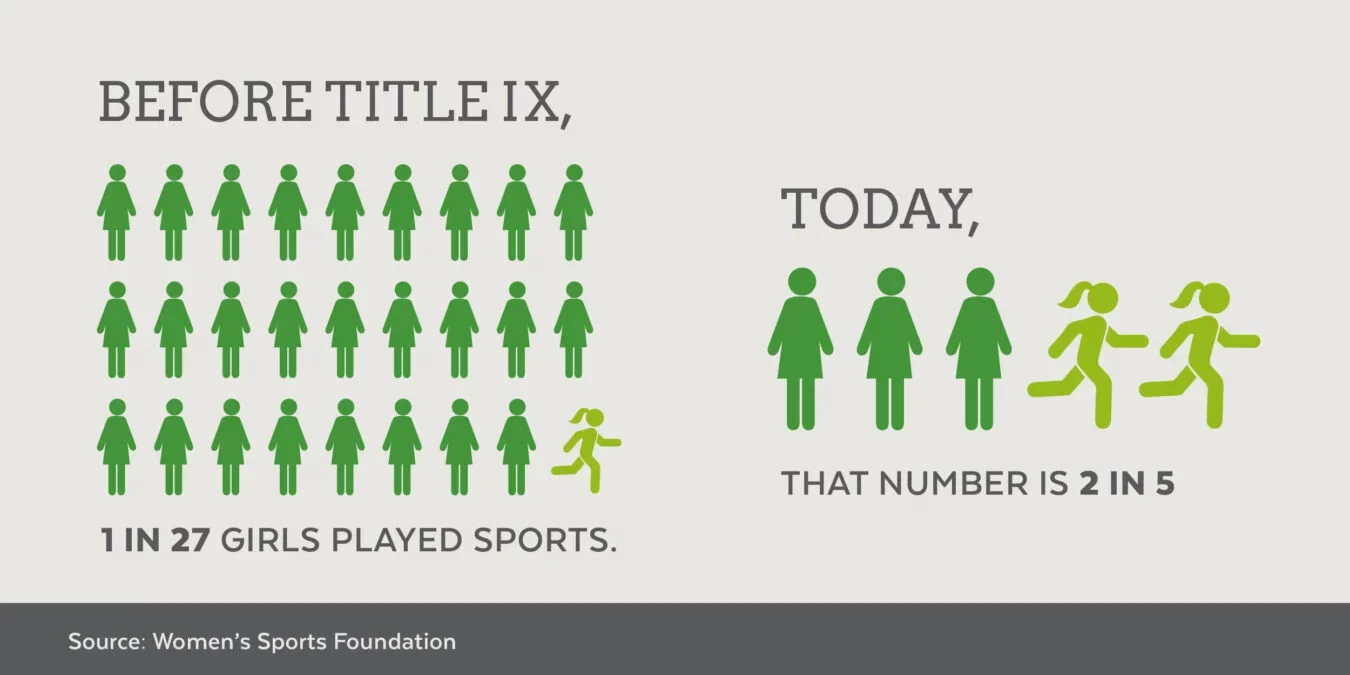2022 marks the 50 year anniversary of Title IX
By Emily Harrington, Reporter
Title IX is the federal civil rights law that was established as part of the Education Amendments of 1972. This law protects people from discrimination based on sex in education programs, stating that “No person in the United States shall, on the basis of sex, be excluded from participation in, be denied the benefits of, or be subjected to discrimination under any education program or activity receiving federal financial assistance.” Although athletics are not specifically mentioned in Title IX, the law has had a significant effect on athletic funding, giving girls and women opportunities they did not have before in sports. 2022 is the 50th anniversary of Title IX, and many changes have been made since the law was passed.

One of the most notable figures who worked to pass Title IX was American tennis star, Billie Jean King. King fought for women to have equality in competitive sports and testified in front of Congress in support of Title IX.
“My whole life has been about equal rights and opportunities. For me it really goes back to the health of mind, body, and soul,” King famously said.
Prior to Title IX, athletics for women were considered recreational activities and were often noncompetitive, informal, and focused on physical conditioning. Women’s sports programs received only a small amount of funding from schools’ budgets, and women were unable to receive athletic scholarships. Compared to today, only a small percentage of girls played competitive sports throughout high school, and many did not play in college. Since the passage of Title IX, high school girls’ participation in sports has grown by over 1000 percent according to the 2022 NCAA report, “The State of Women in College Sports.”
“My life would be very different without playing sports,” freshman Lena Puz said. “I think that it is very important that girls are able to have equal athletic opportunities and options.”
However, while Title IX has accomplished many things, there have also been some unfortunate drawbacks. In some instances, schools eliminated athletic programs for men instead of increasing access for everyone. Some schools and universities found it difficult to meet equality standards with their budgets, so they cut programs to meet Title IX’s expectations.
“There is a slight downside to Title IX, in terms of wrestling, with some programs being cut,” wrestling coach Per Lars Blomgren said. “But that isn’t to say that Title IX isn’t a great thing. Right now, a turning point in the wrestling community is how much bigger women’s wrestling has become.”
While Title IX has accomplished a lot, there are still challenges facing girls in sports. The Women’s Sports Foundation reports that by age fourteen girls drop out of sports at twice the rate as boys. Girls still lack access to teams and facilities, may have lower quality venues and playing times, and may lack positive role models.
“[Title IX] is important, because girls and women deserve to be equally represented and able to have the same options,” senior Saffron Hinz said. “There is still progress to be made, but things are definitely going in the right direction.”
